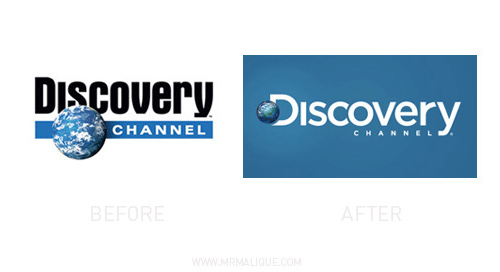
Types of Re-branding in the corporate world[/b]
Partial Re-brand
In situations when a brand has been firmly established yet is simply outdated or needs to be refreshed due to the addition of new products or services, tweaking is required, rather than a full-blown rebrand. In these cases, you don't want to eliminate the brand value that's been developed over the years, but merely make subtle changes to update it or make it representative of an expanded offering.
Total Rebrand
Corporate mergers will often result in complete rebrands. When organizations have failed to establish a brand, or have been through any kind of scandal, total rebranding may also be in order. In these cases, the intent is to erase any previous brand identity and replace it with completely new imagery and messaging.
Sprint is an excellent example of a total rebrand, necessitated when the company merged with Nextel. The company eliminated the angular logo (and red corporate color) that seemed indicative of inflexibility and replaced it with a more fluid logo--placed on a cheerful gold background--that reflects the company's friendliness and flexibility.
Rebranding Advice
While it's impossible to know for certain what the outcome of a rebrand will be, you certainly can put yourself in a position to be successful by making solid decisions, beginning with building a brand-planning team. Trusted employees should be included, and perhaps even some valued customers, so you can receive external input.
Next up is reviewing the way the company operates, to ensure that internal processes and procedures are appropriate given the new brand messaging, or determine that they need to be altered in some way. Following that exercise, an exciting rollout needs to be orchestrated; employees must be passionate about the new brand, so they can generate passion in the marketplace. Every department should be involved, since rebranding isn't merely a marketing function, but a companywide endeavor.
Once the initial excitement dies down, it's important to sustain the new brand by instituting an ongoing program for measuring employees' consistent and complete use of it. Maintaining brand integrity within a company puts you on a path to market buy-in, which is the very reason for rebranding in the first place.
In re-branding there are steps to be taken, same ones needed to be followed when a new corporate identity is to be set-up:
1. Dot the research & recommend
In this stage, identity, design, communications and behaviour audits conducted. There are established perceptions of the brand, its business and its behaviour.
2. Create New Identity
Consulting agency fulfils a brief for a new visual identity and communications strategy to introduce identity and change behavior is developed.
3. Take into consideration the details
Development of credible, distinctive and coherent identity and yet, very important, consistent approach to communications throughout the organization developed.
4. Launch then Implement
Choices made about scale and timing of change.
So what are the drivers for re-branding? In most cases re-branding is done in response to external factors, whether there is a corporate structural change, or a concern over external perceptions of the organization and its activities. More rarely re-branding can rely on internal perceptions, like the perception of the company in relation to its competitors. This informal and internally focused approach may well produce a biased result, if the research phare is not done properly.
Next step, after the need is identified, is to set up objectives and the disparate drivers for re-branding are reflected in a diversity of objectives. The most common objective was to develop a new image or to adapt the image to the new corporate or market changes that occurred.
Ascertaining the value of the new brand depends on the health of the brand’s key resources. These may be items such as product features, or the number of loyal customers, sales outlets and staff.
In all circumstances, it is critical to have a degree of control over consumers or trade during the changeover — either through existing distribution rights and channels, or through extensive public relations, advertising and promotion. Planning the transition is just as important; sound design and execution here can make the difference between success and failure.
The complex process of re-branding requires the involvement, not only of the project leadership team, but the involvement of staff is necessary, whether this consists in senior managers, or lower management levels or all staff. Also, customers shouldn’t be left out of it.
The complexity, and therefore the resource-intensity, of the process, may require additional resources, such as external consultants. Being an infrequent process, the knowledge of experts, their dispassionate observation, and the extra hands they may be able to supply, should be considered.
Re-branding is a complex and time consuming effort, than usually anticipated, thus the scale of the task should not be underestimated. Here is a list of critical success factors for the process:
Establish key stakeholders, both external and internal
Use external help to support change and to monitor and evaluate progress.
Include staff in the development process, to ensure commitment to the change
Communications must be continuous, consistent, sustained, and multilateral
Tailor communications to the needs of the different targets
Plan thoroughly; evaluate capacity and have contingency plans for potential crises
Equip and prepare people properly
Monitor and evaluate at all stages
A lot of entrepreneurs as well as small business owners develop their brands during the earlier part of their, restricted of financial resources, and before they get the chance to realize their competitive advantage. During this point in time, a lot of entrepreneurs formulate the decision to put in more time as well as resources in refreshing their brand themselves, to help them contend to higher levels.
